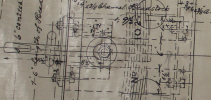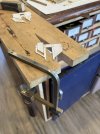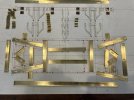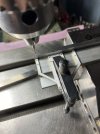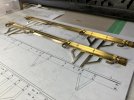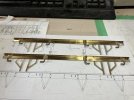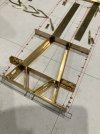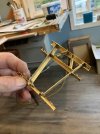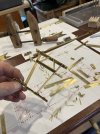A number of items that have been made before the frames can be assembled include the clasp lever posts, the brake shoe hanger brackets and the footboard support brackets last but not least are the spring hanger brackets. The footboard supports are made from 3 pieces which still need to be soldered together.
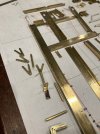
Next were the clasp lever posts which are a combination of some .093” tube flattened such that all the flatting is on one side. A fiddle of a set up without a proper press. This part married to the bottom part machined out of some .125 rod with a 00x90 thread to hold the levers and brace on the bottom.
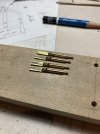
I had to narrow down some tiny toolmakers clamps to hold the top in order to drill the 2 holes.
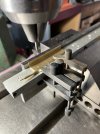
The spring hanger brackets have been challenging first the lower flattened part had to be sorted, a few tests gave me the dimensions that were needed the next picture shows the baldish end of the rods that were turned down out of some .125 rod they were the annealed
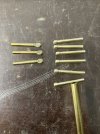
Those on the left have been squeezed in the large mill vice
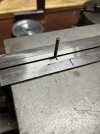
Then annealed again and bent. I had to resend them all so more annealing was undertaken I had to make half a dozen extra because some of them snapped right at the squeezed part. Once they were all bent the next task was to drill the hole in the flat part. A simple wood jig was made that clamped the long part and some scrap brass used to support the flat for drilling .072”
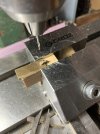
Finally the square back plate and the bent parts were soldered together using the third hand and some high temperature soft solder some worthington 97/3 with a water soluble flux.
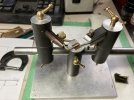
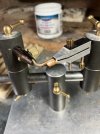
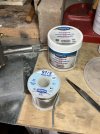
So this is the current state of play once all the hangers are soldered together I will drill the holes in the back plates.
Michael

